This step by step diy woodworking project is about vertical tiered planter plans. This detailed article features instructions and complete diagrams about building a beautiful ladder planter that you can lean to any wall on your property. This project requires basic tools and materials, so that any person with beginner skills can get the job done in less than a week.
Work with good judgement and don’t forget to take a look over the rest of the related plans, as there are many designs and woodworking projects to select from. Work with attention and don’t forget that a good planning will save you from many issues and it will keep the costs within the total budget. Invest in high quality materials, such as pine, redwood or cedar. Drill pocket holes before inserting the galvanized screws, to prevent the wood from splitting. See all my Premium Plans HERE.
Projects made from these plans
Vertical Tiered Planter Ladder Plans
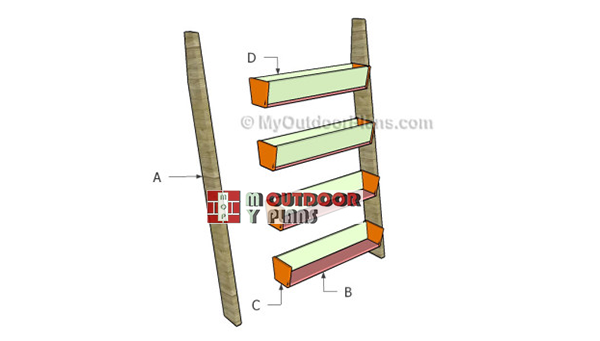
Building-a-vertical-tiered-planter
Cut & Shopping Lists
- A – 2 pieces of 2×6 lumber – 72″ long POSTS
- B – 4 pieces of 1×6 lumber – 34 1/2″ long BOTTOM
- C – 8 pieces of 1×8 lumber – 6 3/8″ long SIDES
- D – 8 pieces of 1×6 lumber – 34 1/2″ long FACES
- 2 pieces of 2×6 lumber – 8 ft
- 1 piece of 1×8 lumber – 6 ft
- 6 pieces of 1×6 lumber – 8 ft
- 2 1/2″ screws
- 1 1/4″ screws
- wood putty, wood stain
Tools
![]() Hammer, Tape measure, Framing square, Level
Hammer, Tape measure, Framing square, Level
![]() Miter saw, Drill machinery, Screwdriver, Sander
Miter saw, Drill machinery, Screwdriver, Sander
Time
![]() One day
One day
Related
How to build a tiered planter
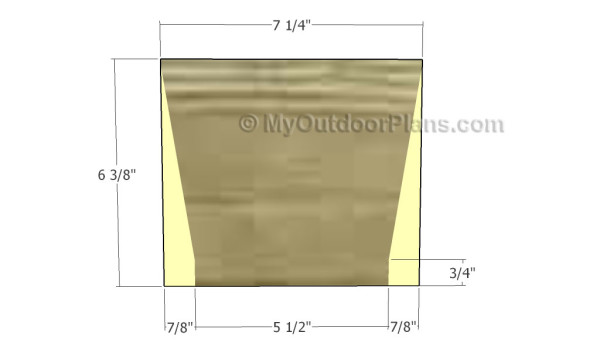
Building the ends of the planter
The first step of the woodworking project is to build the ends of the planters. Mark the cut lines on the slats and get the job done with a circular saw. Smooth the edges and remove the residues.
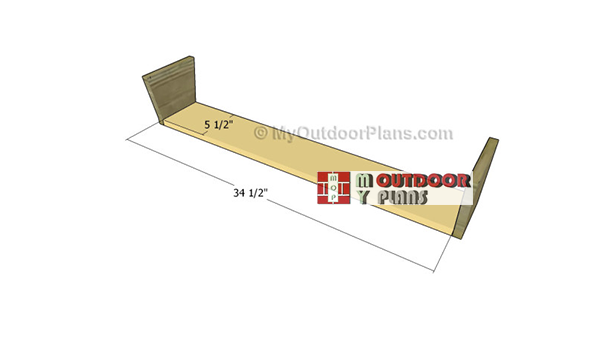
Building-the-planters
The next step of the project is to attach the bottom to the sides of the planters. Add glue to the joints, drill pilot holes through the side components and insert 1 1/4″ screws. Align the edges with attention before inserting the screws. Drill several drainage holes through the bottom component.
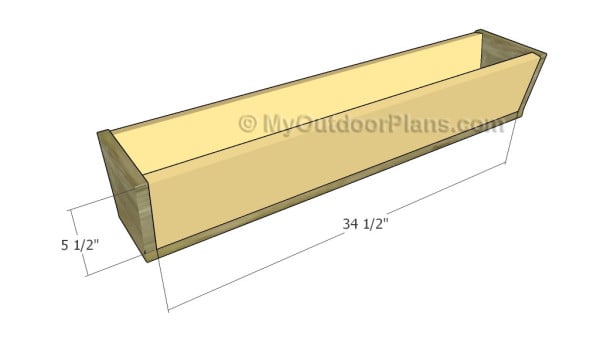
Fitting the faces of the planter
Build the faces of the planters out of 1×6 lumber. Drill pilot holes through the sides and insert 1 1/4″ screws into the components. Add glue to the joints and leave no gaps between the components.
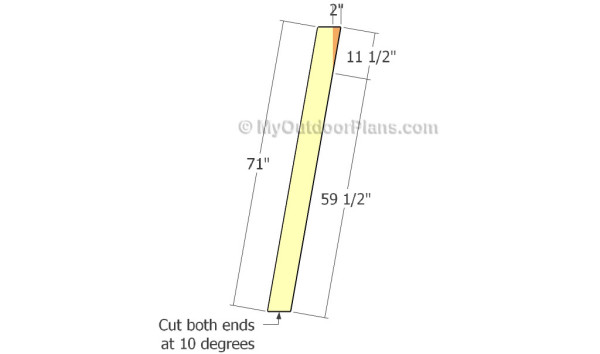
Building the legs
Build the supports out of a 72″ long 2×6 beam. Cut both ends of the beam at 80 degrees. Afterwards, use a saw to make the cuts to the top of the supports. Smooth the edges with fine-grit sandpaper and remove the residues with a damp cloth.

Fitting the first planter
Start the assembly of the vertical tiered ladder planter. As you can easily notice in the diagram, we recommend you to fit the top planter to the side legs. Align the edges with attention. Drill pilot holes through the side legs and insert 2″ into the planters. Add glue to enhance the bond of the joints.
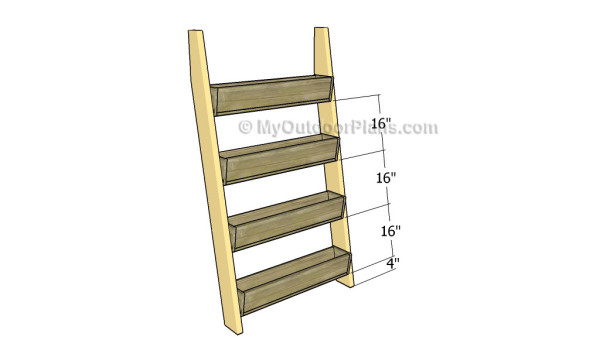
Attaching the legs
Fit the rest of the planters, making sure you place them equally-spaced. You can adjust the distance between the planters to suit your needs.
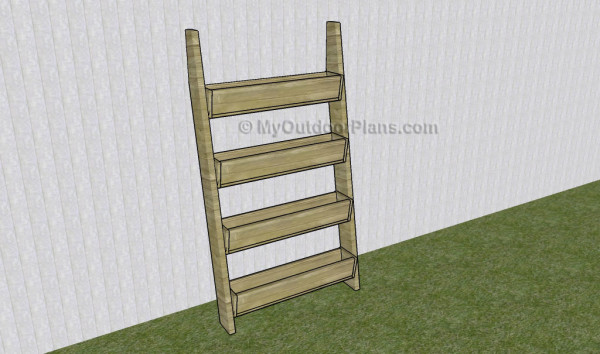
Vertical tiered planter plans
One of the last steps of the woodworking project is to take care of the finishing touches. Therefore, fill the pilot holes with wood putty and smooth the surface with 120-grit sandpaper.
Top Tip: If you want to enhance the look of the project and to protect the wooden garden swing stand from decay, we recommend you to cover the components with paint or stain.
This woodworking project was about vertical tiered ladder planter plans free. If you want to see more outdoor plans, we recommend you to check out the rest of our step by step projects. LIKE us on Facebook and Google + to be the first that gets out latest projects and to hep us keep adding free woodworking plans for you.





4 comments
These directions caused me time and money! They say to use 1x4s for the faces and then later it says use 1x6s. We bought and cut enough 1x4s to make two of these planters only to discover that the faces are too small! You need to fix these directions immediately!
I’ve updated the cut list. However, you are overreacting. You can still build the planters using 1x4s and give the side slats a nice curve. It is a question of design, it’s not the end of the world if you have a planter built with 1x4s.
Just wanted to give you a heads up but your measurement for the lengths of the lumber to get do not match up to eye materials list. I think the 1×4 lengths you have under “materials” you meant to have 1×6. Just wanted to bring that to your attention.
Thanks. Updated the list.